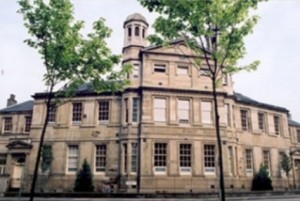 Former farm buildings, historic churches, sprawling industrial buildings and other listed buildings can find new uses with careful restoration. Finding new uses for listed properties can help preserve them for future generations, while ensuring they are not left to decay because of neglect or disuse. Listed office buildings are also being maintained and preserved thanks to ongoing use as office space. Although heritage and listed properties can pose unique challenges in terms of developing them into office spaces, they evoke memories of a bygone area and provide companies unique spaces to do business.
Former farm buildings, historic churches, sprawling industrial buildings and other listed buildings can find new uses with careful restoration. Finding new uses for listed properties can help preserve them for future generations, while ensuring they are not left to decay because of neglect or disuse. Listed office buildings are also being maintained and preserved thanks to ongoing use as office space. Although heritage and listed properties can pose unique challenges in terms of developing them into office spaces, they evoke memories of a bygone area and provide companies unique spaces to do business.
About Listed Building Office Spaces
The hallways and offices of listed buildings in towns and cities throughout the UK have seen businesses grow, disappear and prosper over the decades. Their preservation ensures a historic tie to centuries of economic and business development. As the same time, developers in communities across the UK are preserving the country’s built heritage by transforming and re-purposing listed properties into office buildings. Listed buildings are often attractive for developers because of their location. In many cases, listed and heritage buildings are found in city centres where space is limited for development of new properties.
While maintaining their original character, listed office spaces can provide tenants with modern services and amenities found in any contemporary office space. These amenities can include virtual meeting rooms and state-of-the-art telecommunications. Office space in heritage and listed properties also provide tenants with one-of-a-kind character that offers a unique work environment for their employees.
Considerations when Choosing a Listed Building Office Space
Since listed buildings contribute to the character of a community or area, local authorities require planning permission in order to ensure the structure is maintained. Conditions may be imposed to ensure that the original character of the property is maintained, which can limit the extent to which the property can be developed or redeveloped. When selecting a listed property, businesses or developers should ensure the building is structurally sound and sufficient space is available to successfully use the structure as office space.
When converting a listed property, sever decay could mean that redevelopment is not a financially viable option. For example, it may be too costly to renovate the structure in order for it to meet government building standards. Where a listed property was on an industrial site, there may also be contamination that could require significant investment to mitigate. Listed properties may also not be viable options for conversion when the building is missing its roof or it has large sections of wall missing. Similarly, redevelopment may not be possible if only vestiges of the original structure remain. Local councils may also not support redevelopment of listed properties that are in areas at high risk of flooding.
Many local authorities require that internal layouts, floor levels, roof structures, architectural detailing, overall form and proportions, and wall openings be retained. This may limit development and redevelopment potential. In London, for example, internal alterations are prohibited in many buildings that are individually listed. These restrictions may limit the ability for a business to expand in the future. Property managers can also be limited in their ability to offer flexible office layouts for potential tenants.
Photo: This listed building on Canning Street, Edinburgh, now offers five star business accommodation.

